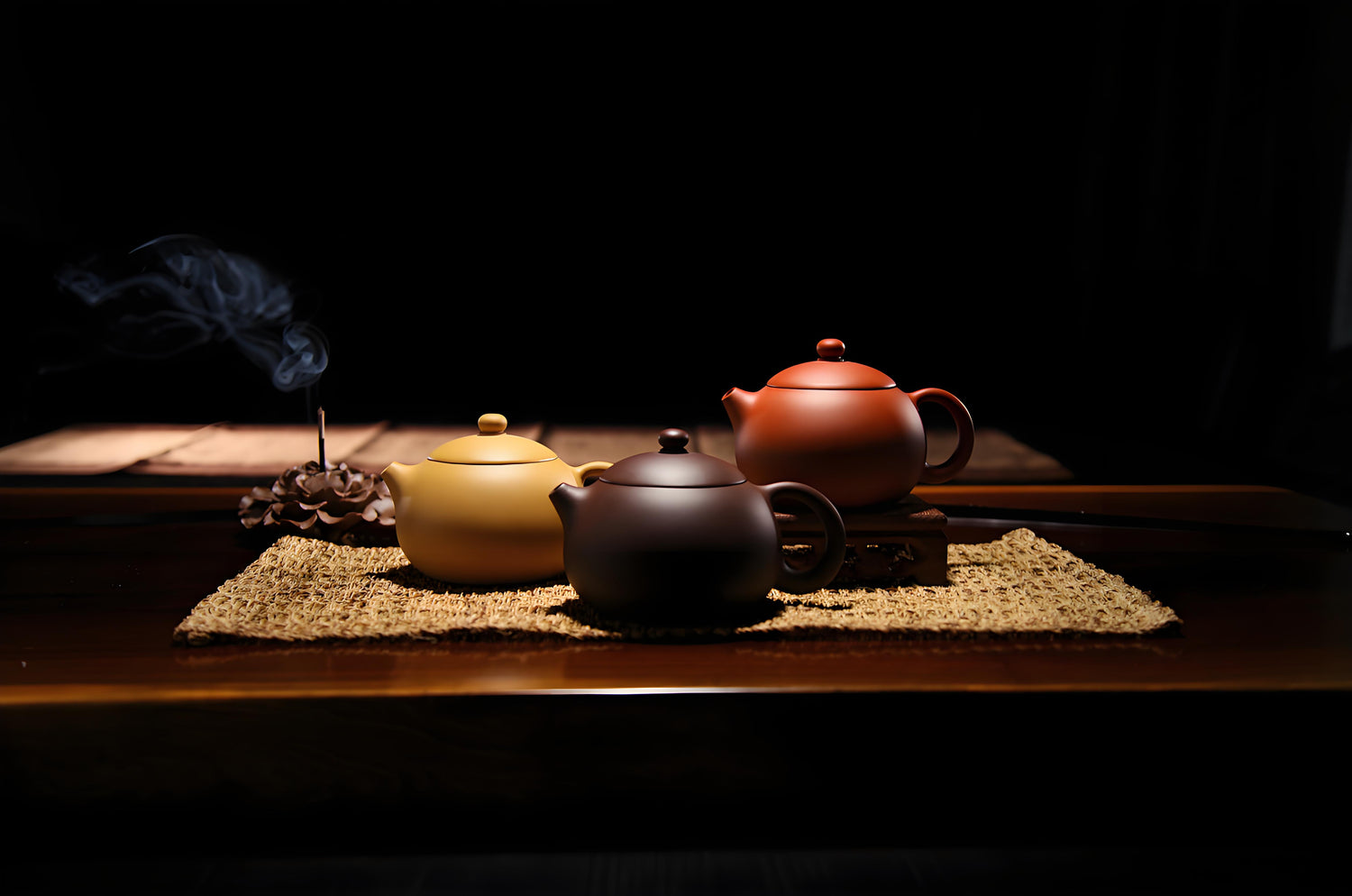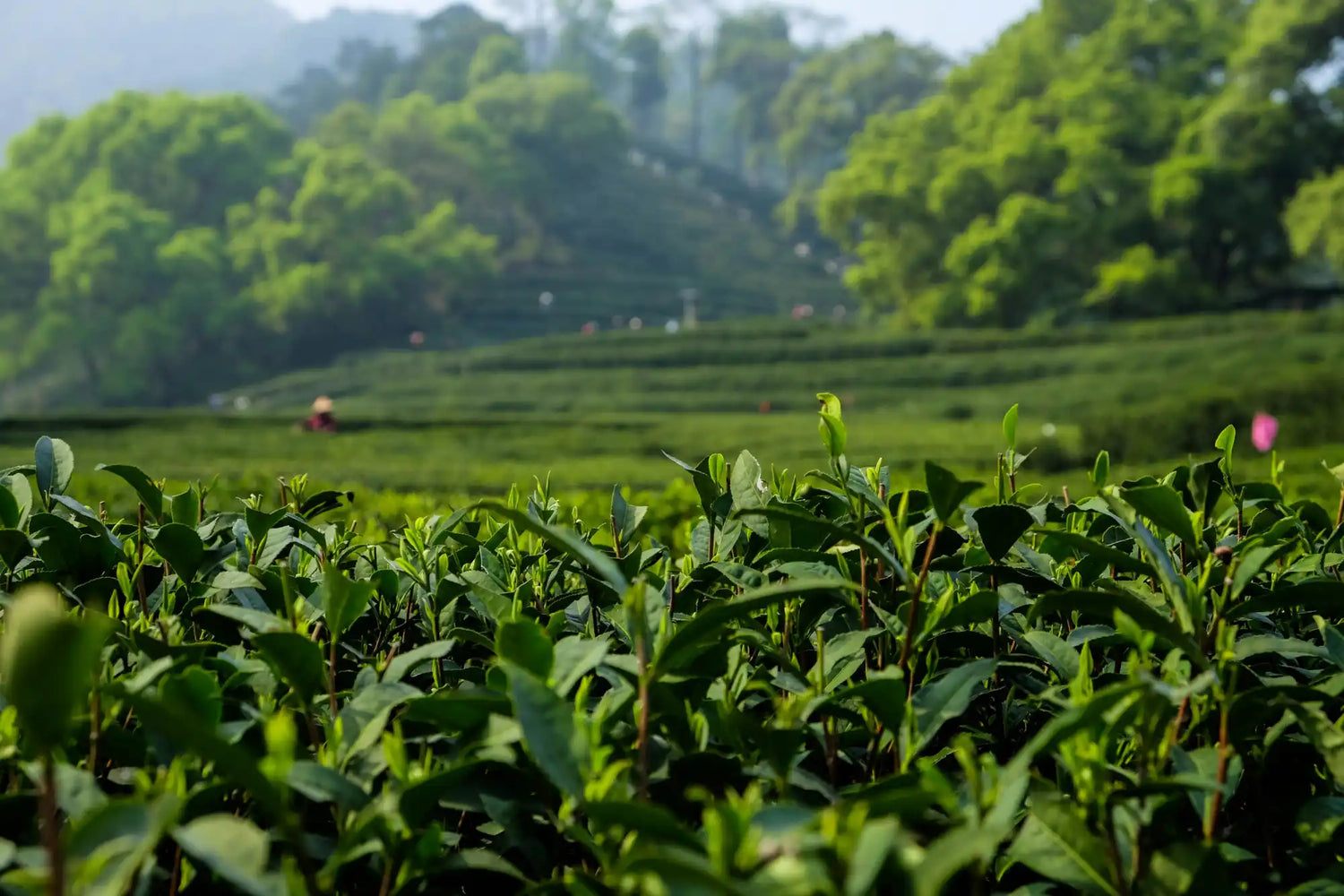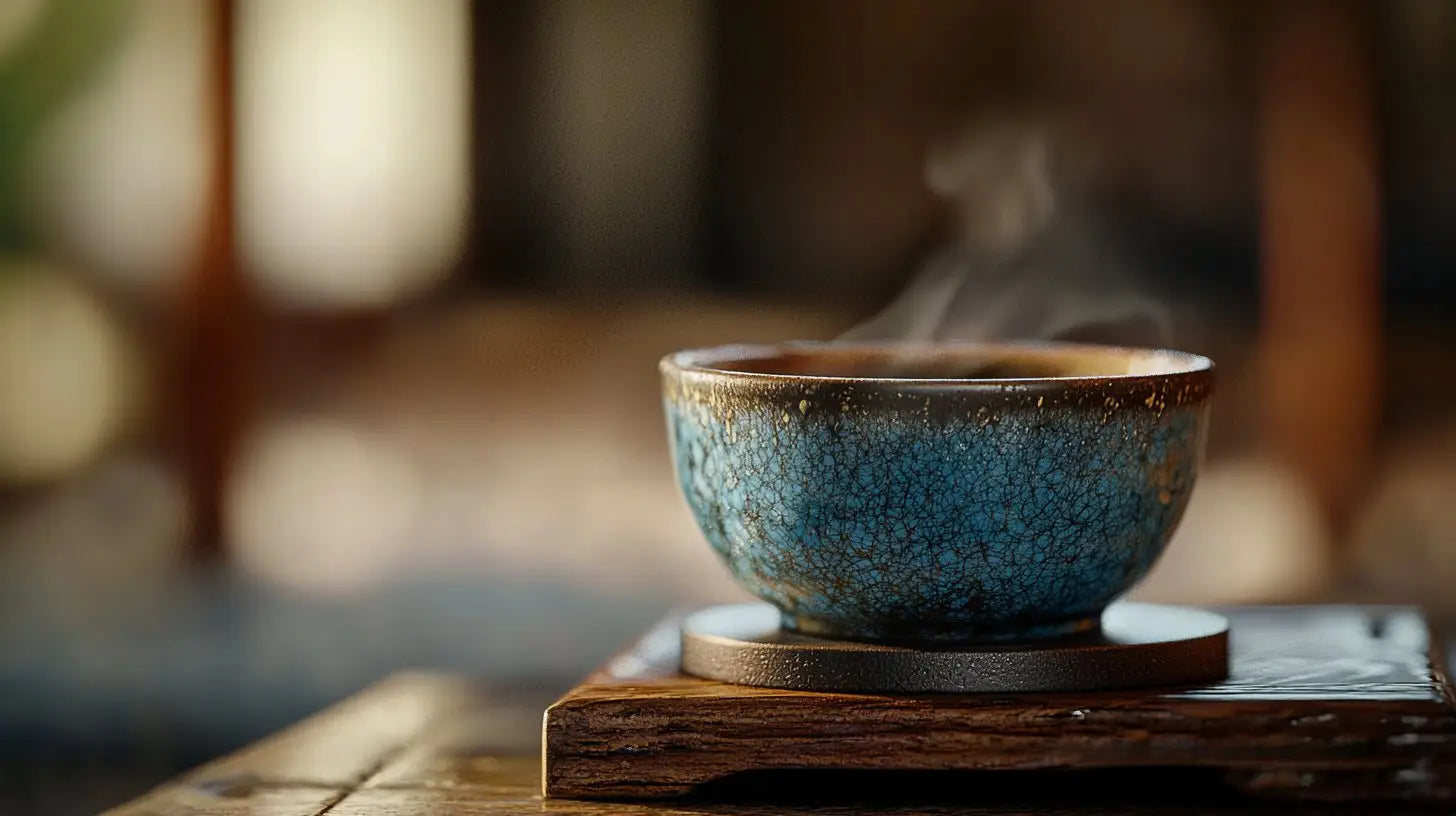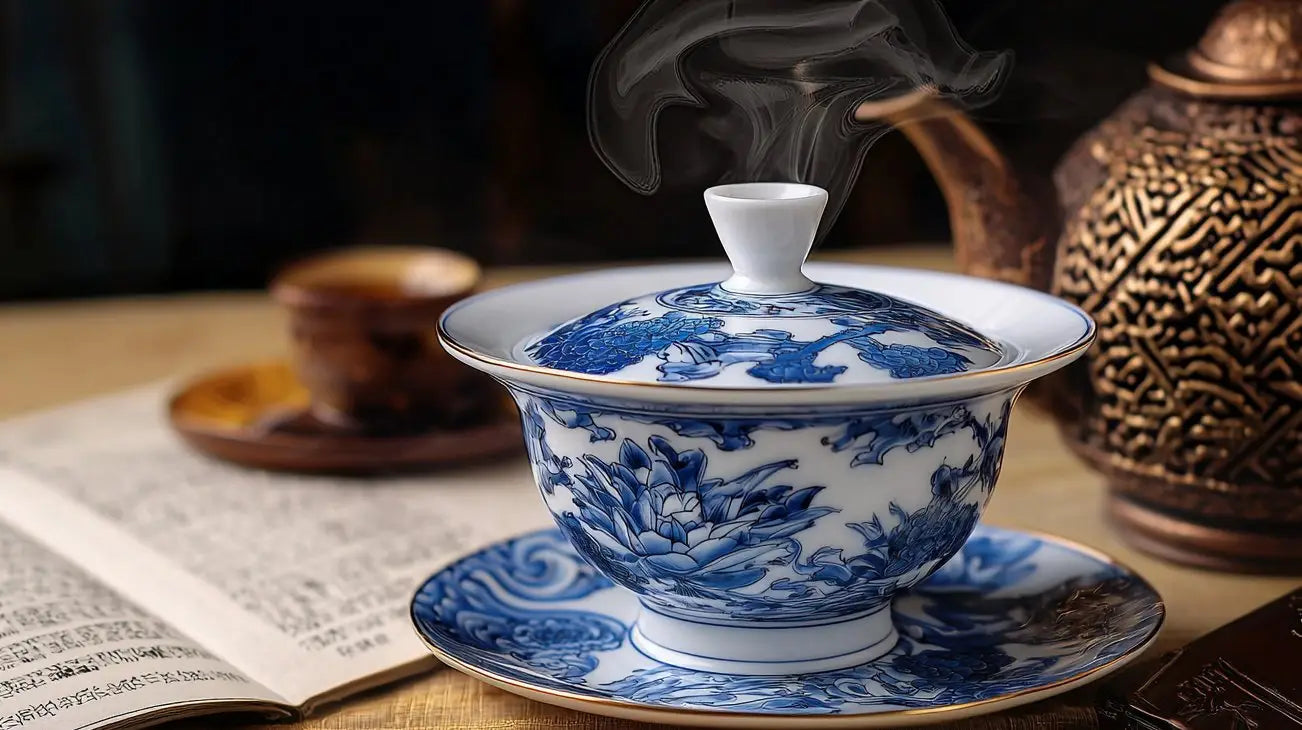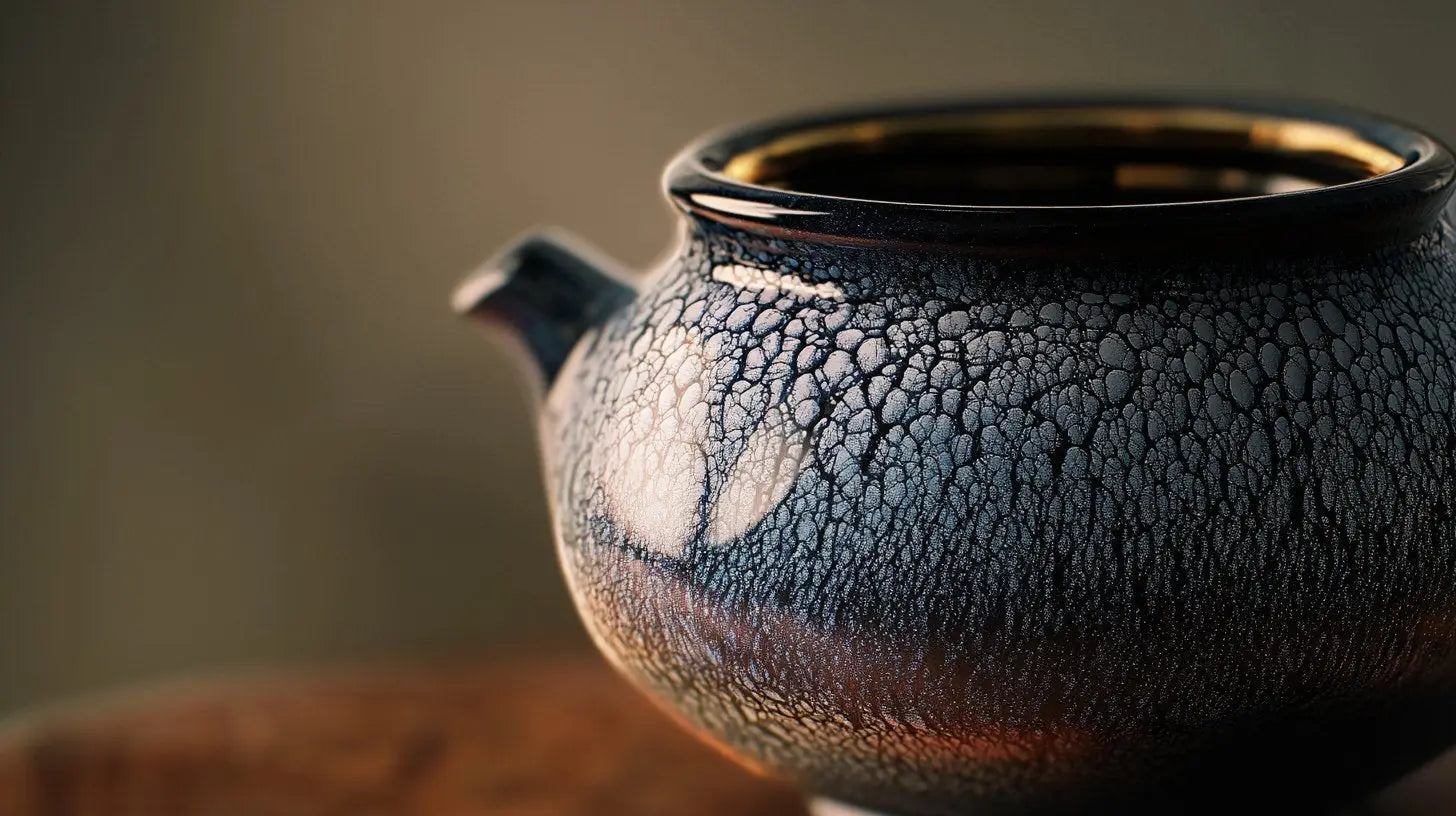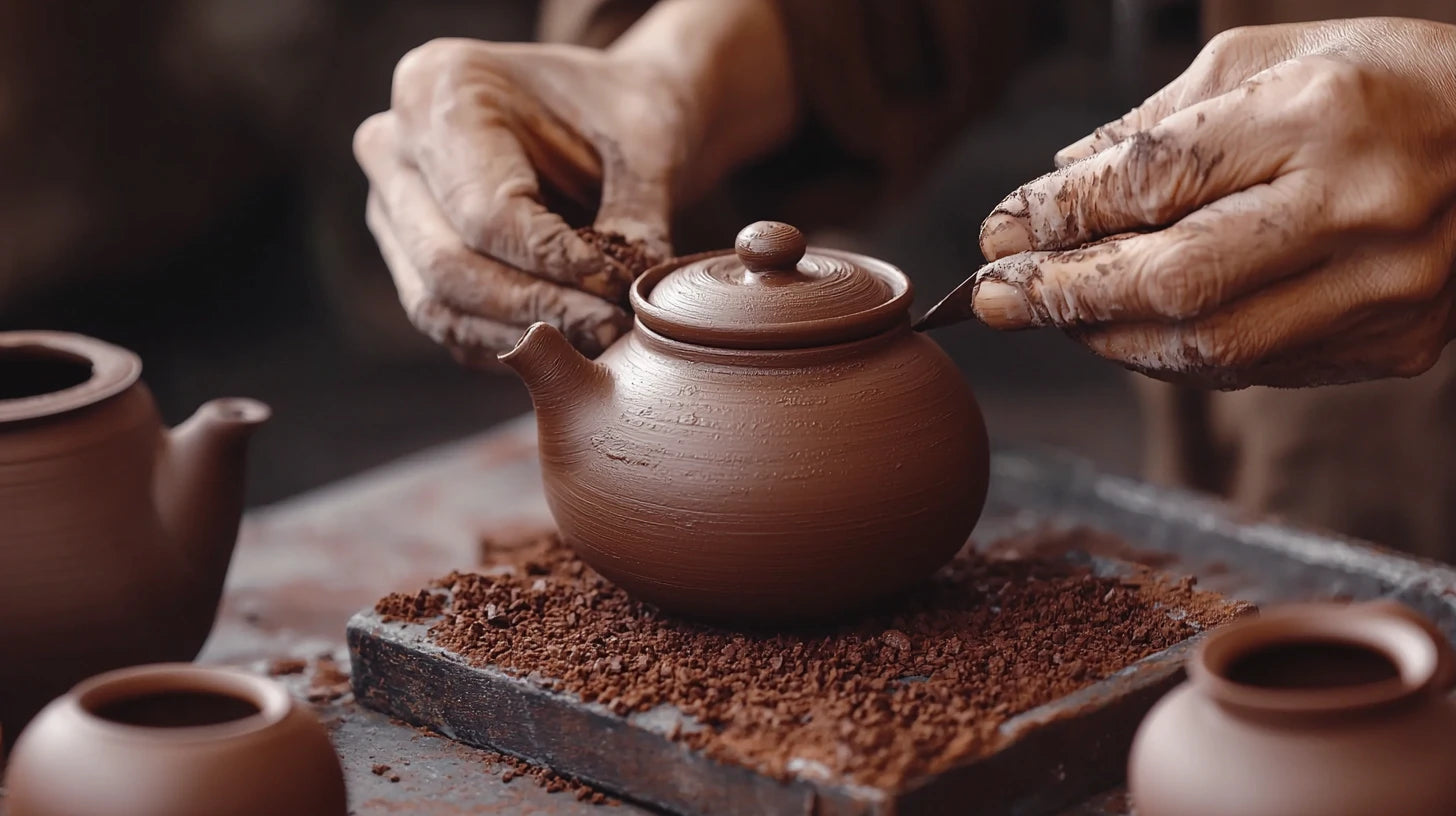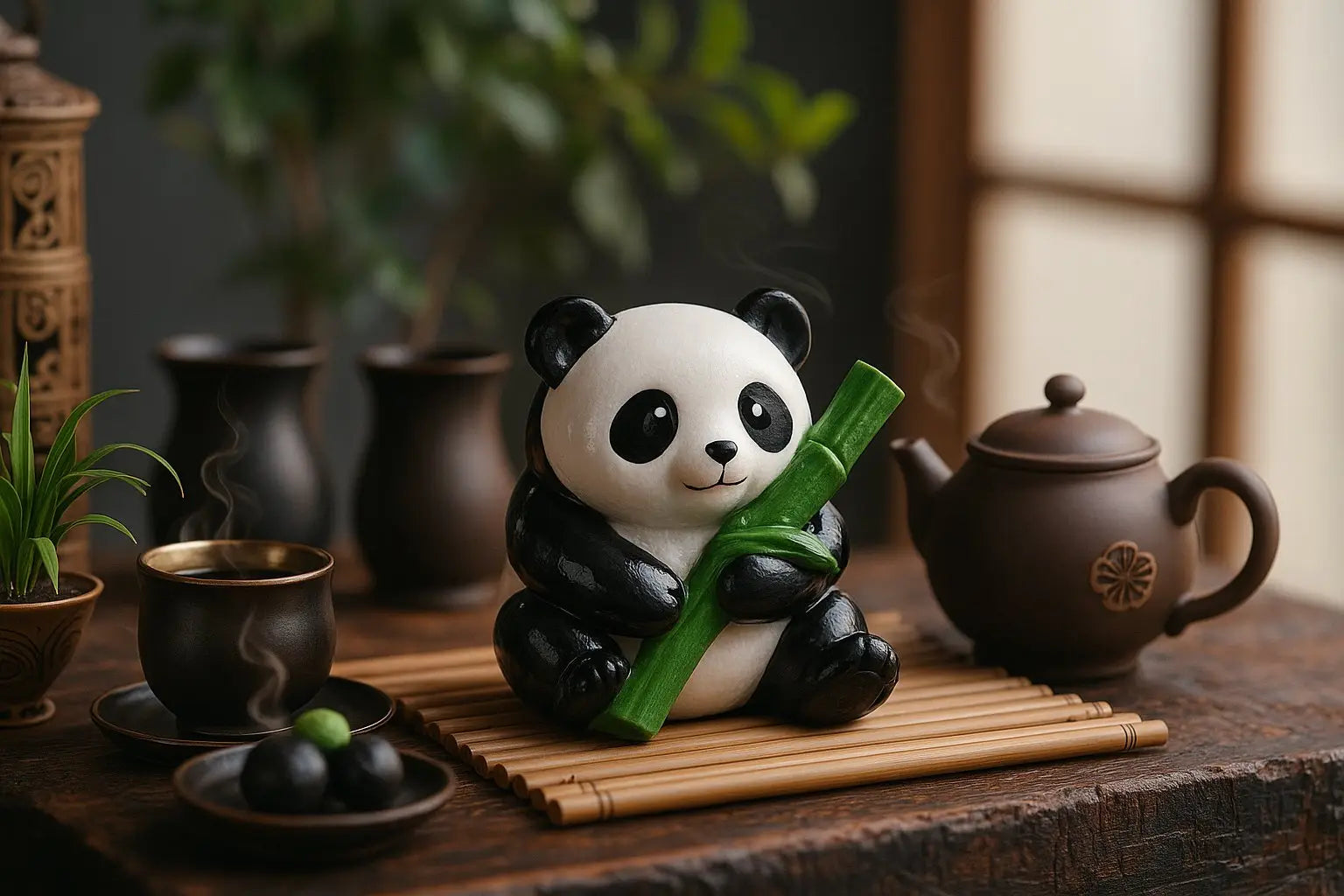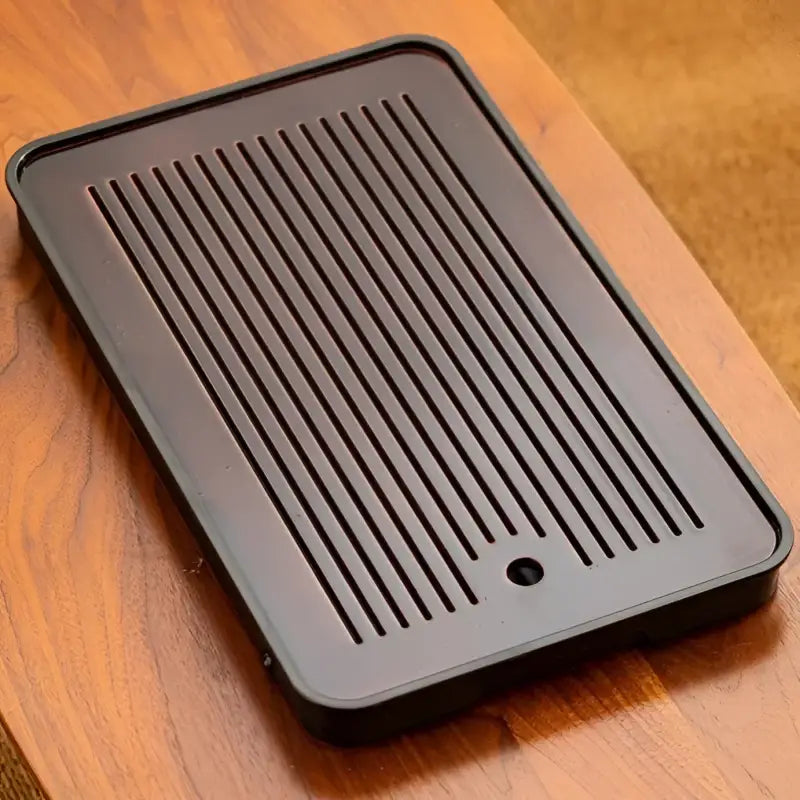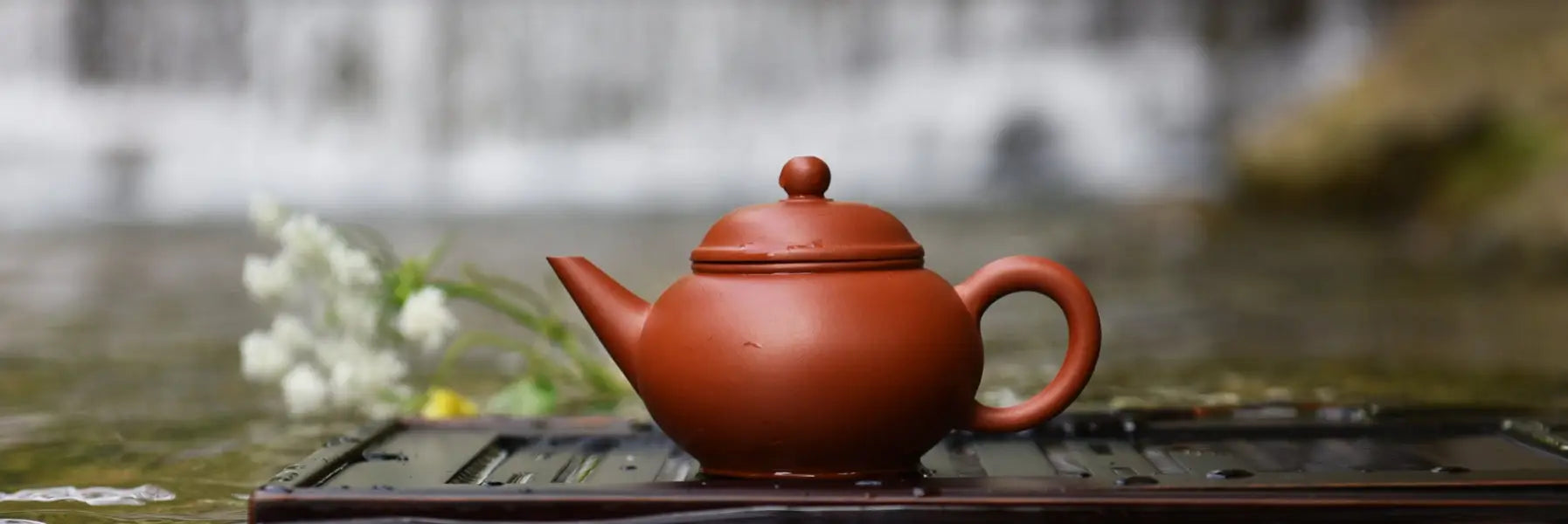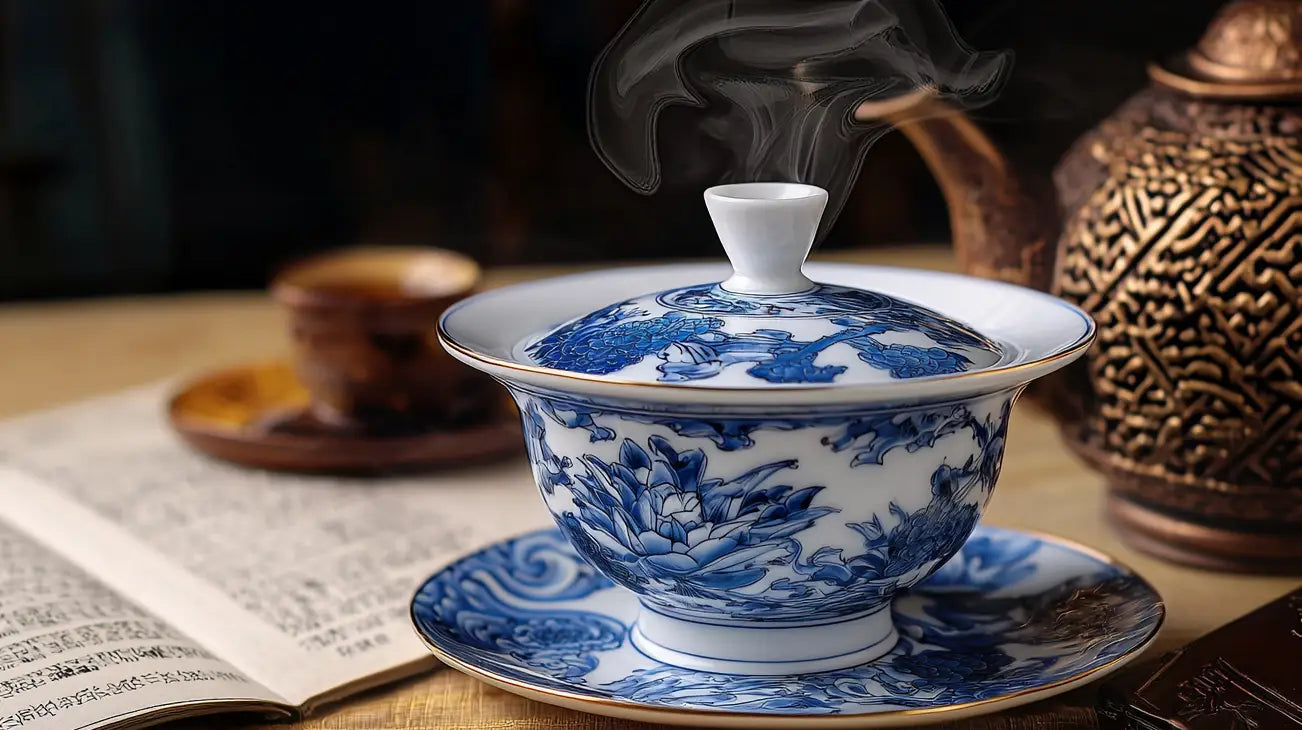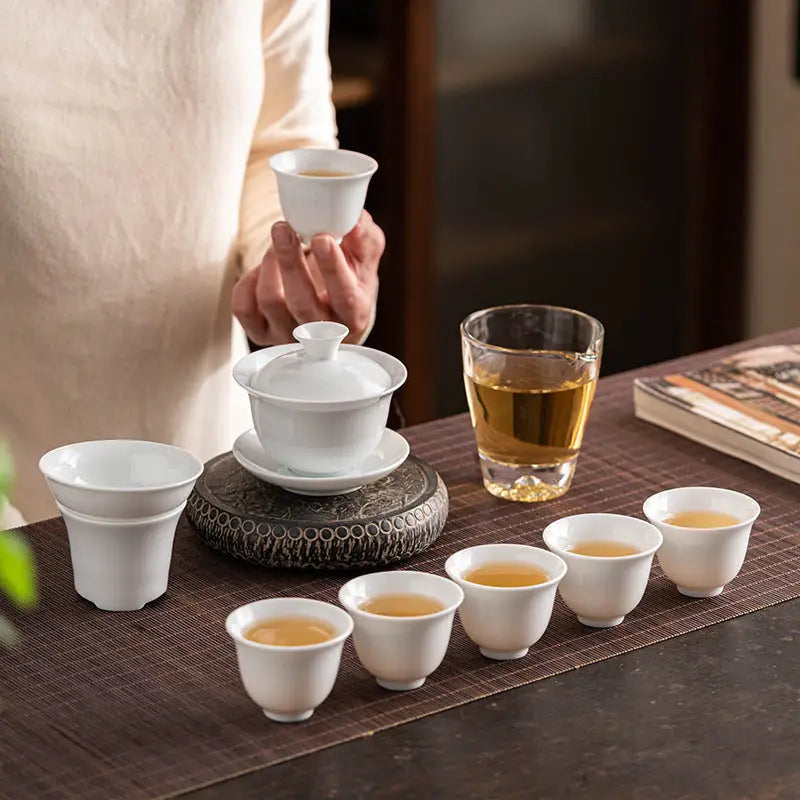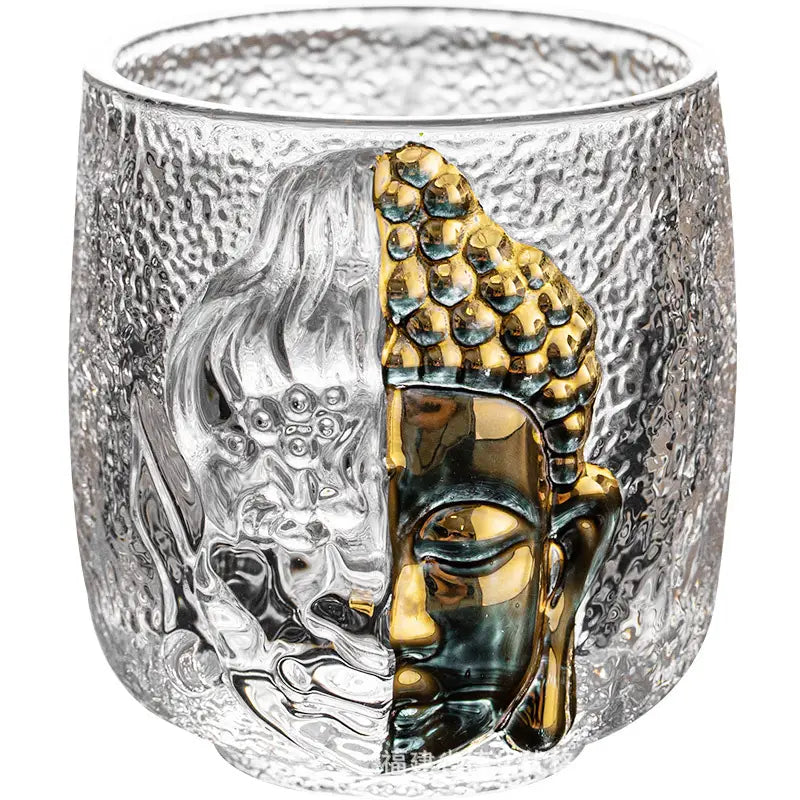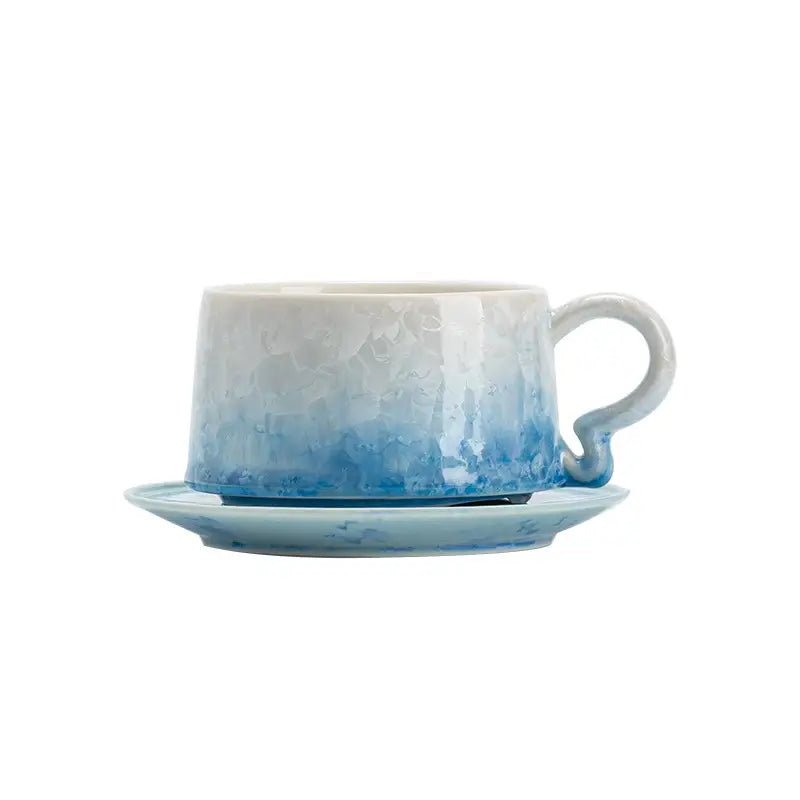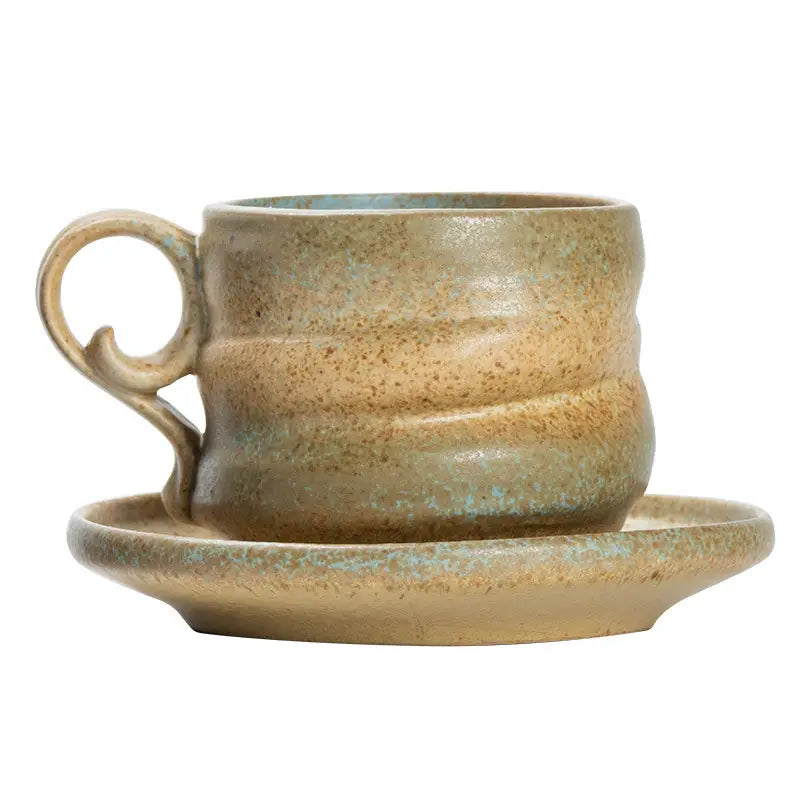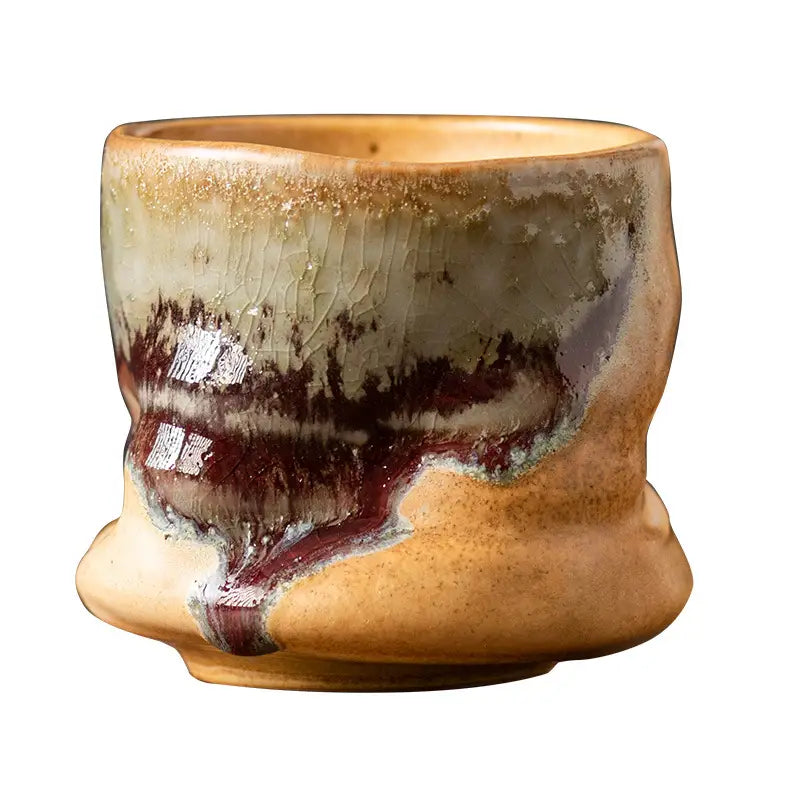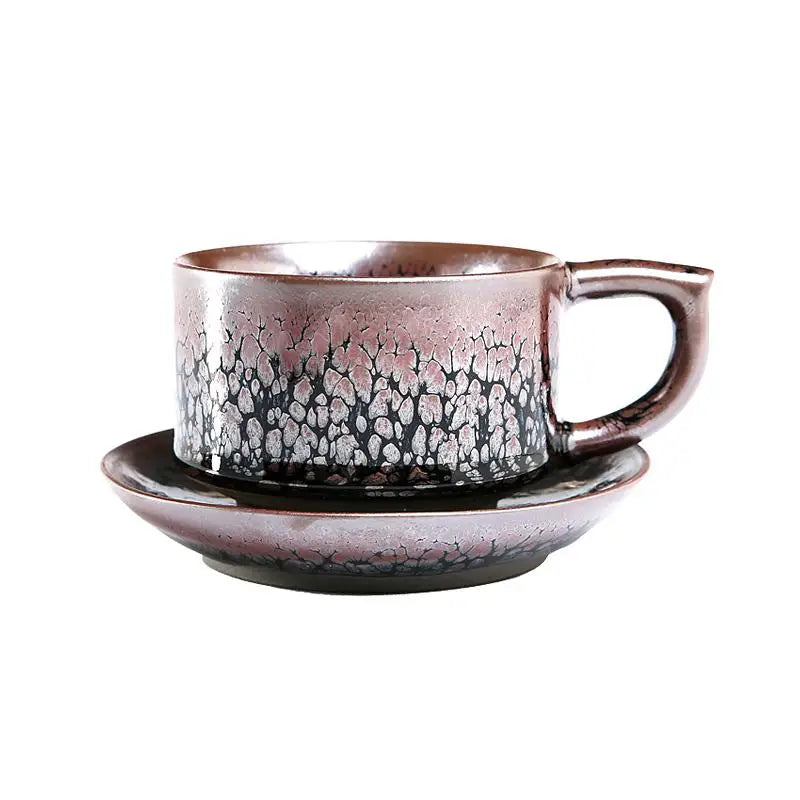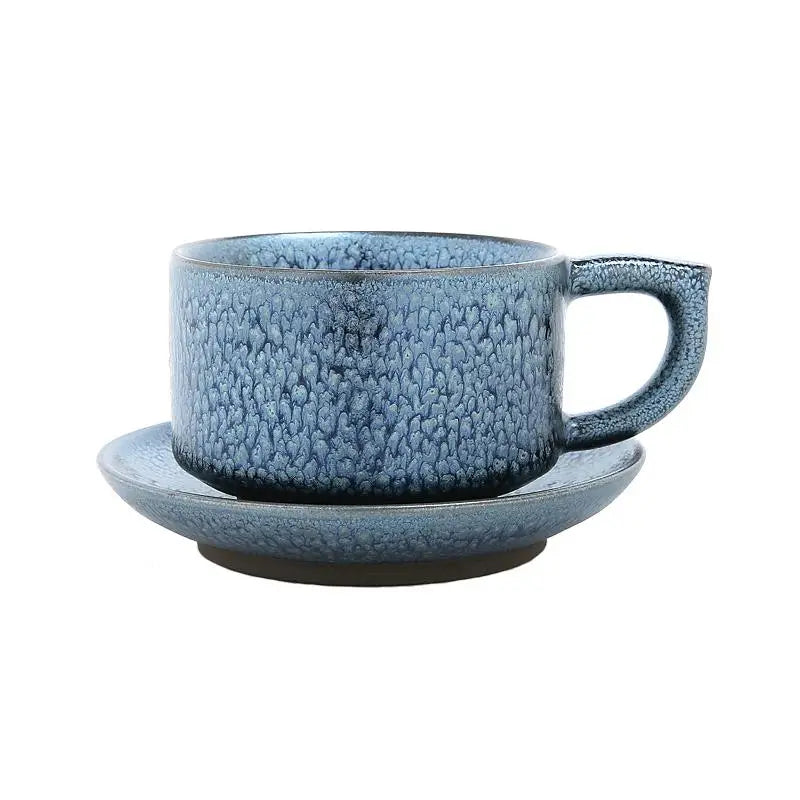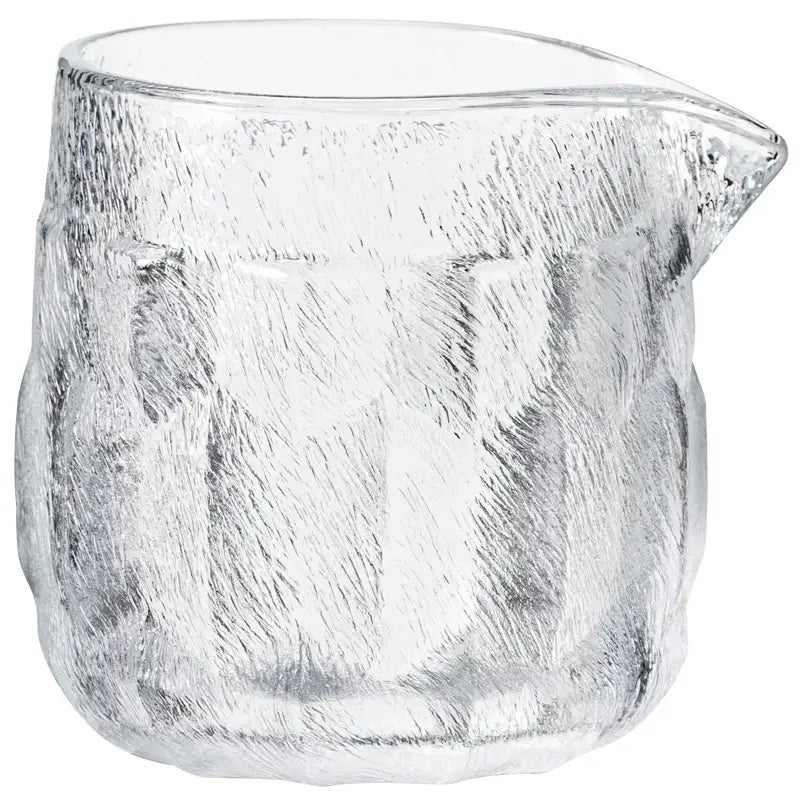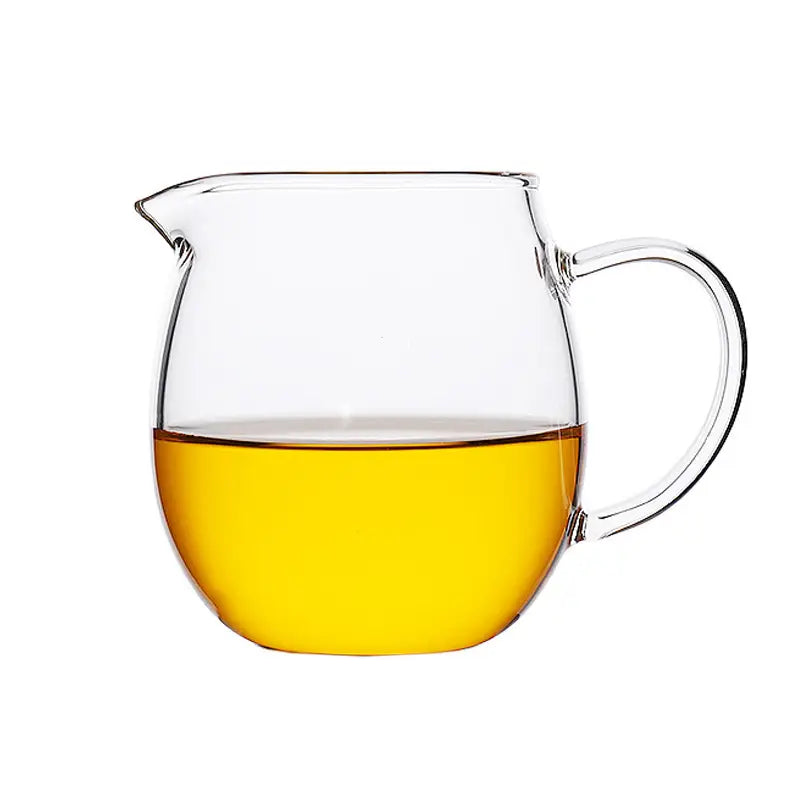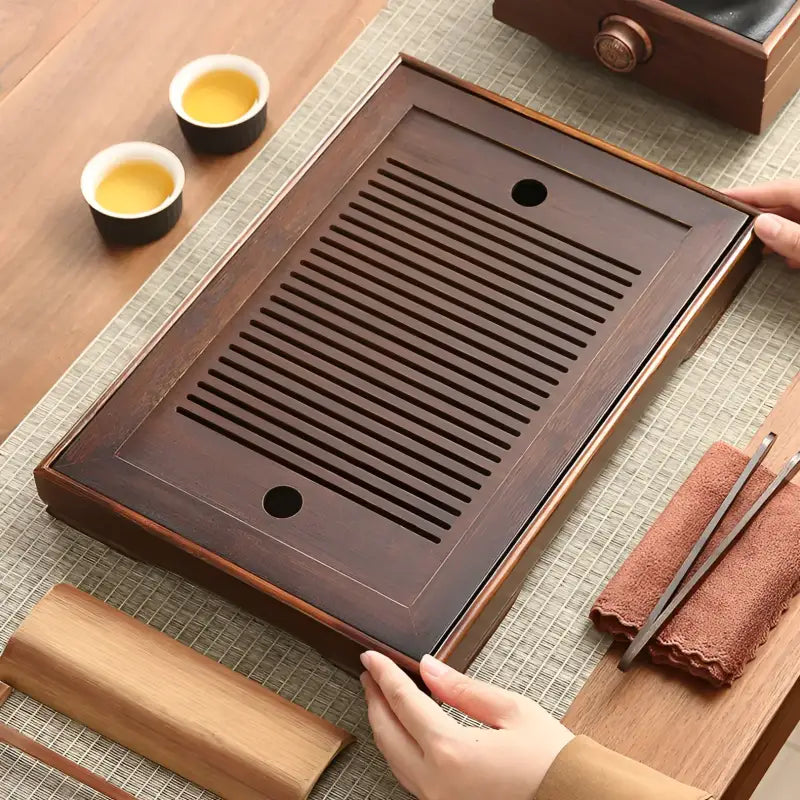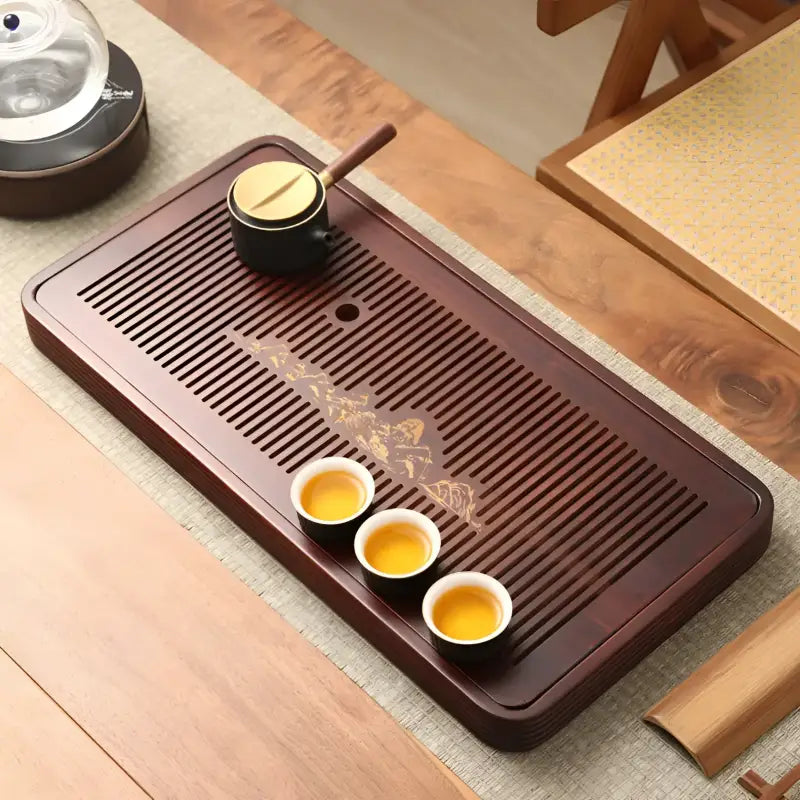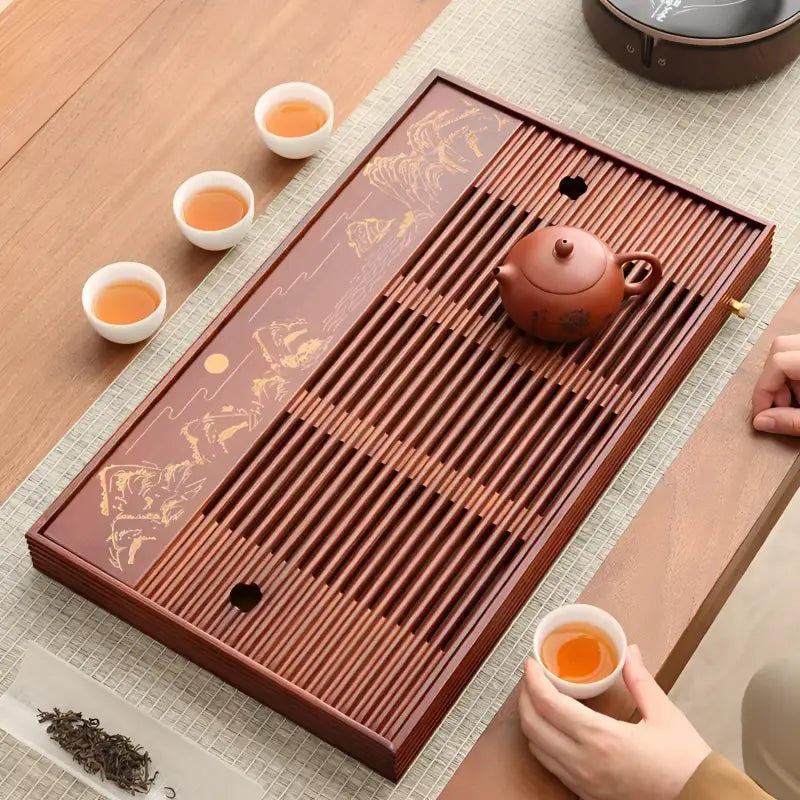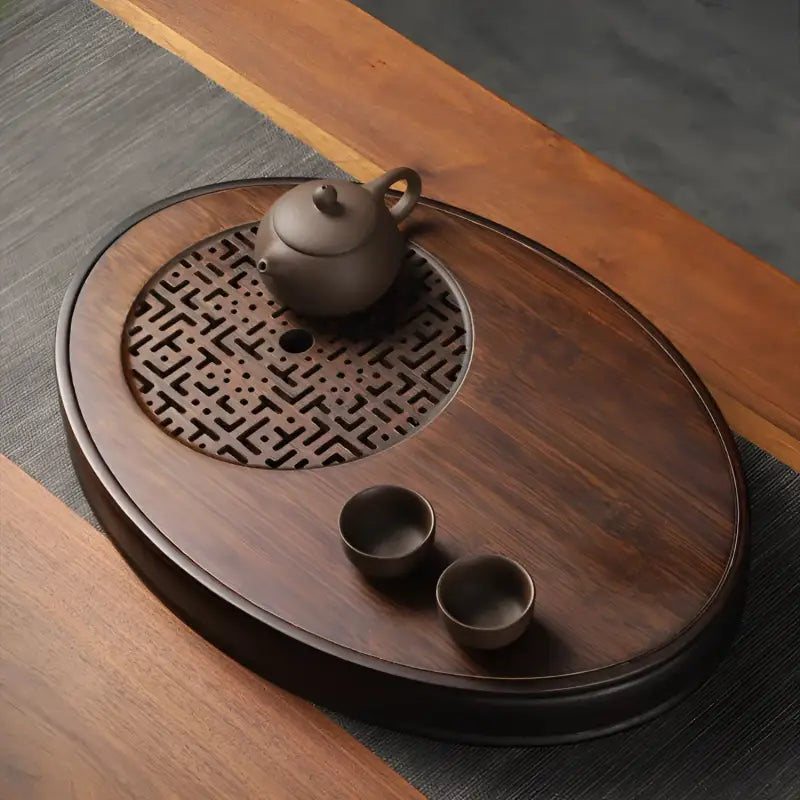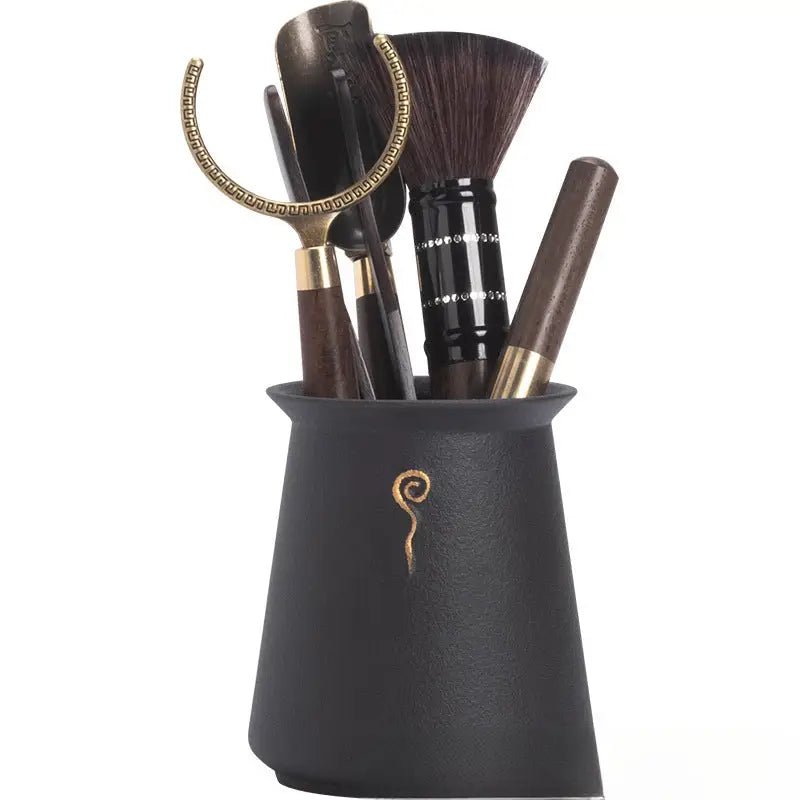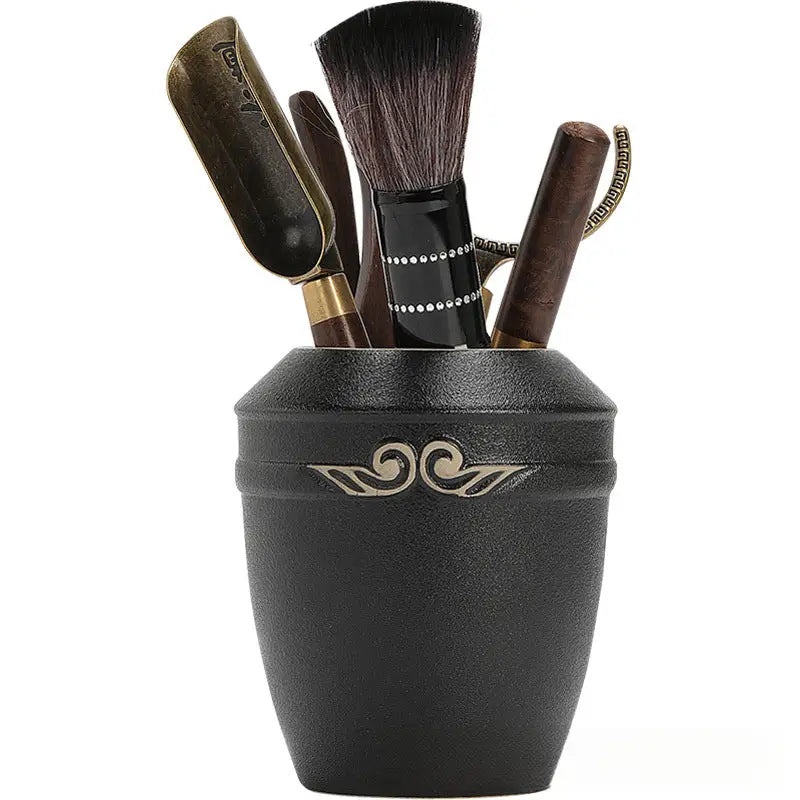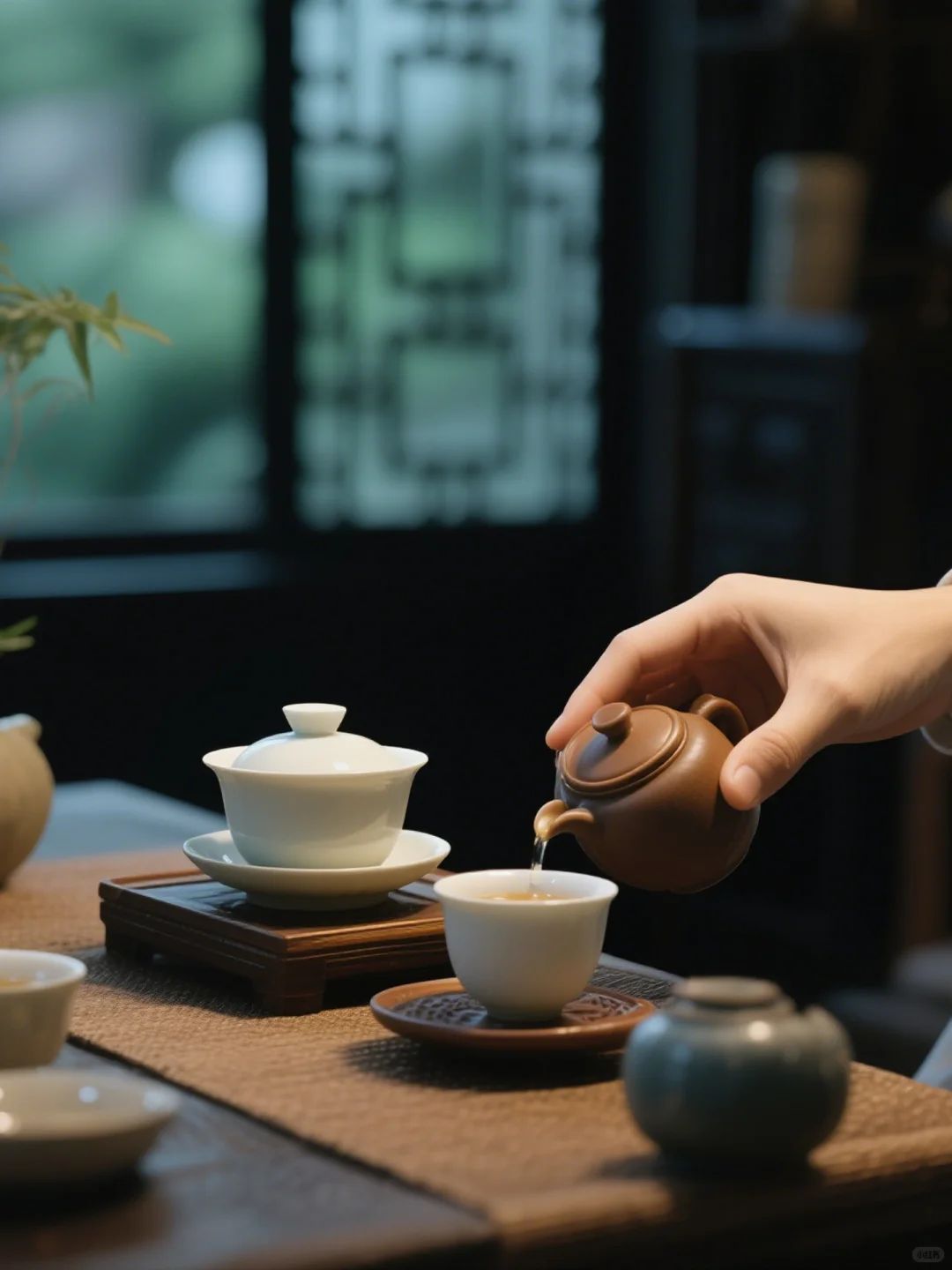A Millennium’s Craft A Gift of Soul
At Tealibere, we believe tea is more than a drink — it is a moment, a ritual, and a path to inner balance. Our journey began with a shared love for Chinese tea culture and a deep appreciation for the artistry behind every teacup, teapot, and tea pet.We travel across the renowned tea and ceramic regions of China — from Yixing to Jingdezhen, Dehua to Huangshan — sourcing the finest handcrafted wares and teas that honor centuries of tradition while embracing modern aesthetics.
Master makes tea leaves
Type: White Tea
Imperial Baihao Yinzhen – White Silver Needle Tea (2025)
Type: GreenTea
2025 First Harvest Biluochun Green Tea – Floral & Fruity Aroma,
Type: Black Tea
Tongmu Jin Jun Mei – 2025 Golden Eyebrow Black Tea
Type: GreenTea
Liu An Gua Pian – Roasted Elegance in a Leaf
Type: Oolong Tea
Premium Jasmine Magnolia Dancong – Compressed Zhangping Shuixian
Type: GreenTea
Taiping Houkui 2025 First Spring Tea – Orchid Aroma, Freshly Pressed Elegance
Type: GreenTea
Old Tree Longjing – 2025 Early Spring Harvest
Type: Black Tea
Tanyang Black Tea – Rose Rouge
Type: Black Tea
Spring Beauty – Tanyang Gongfu Black Tea
Type: GreenTea
Jasmine Silver Needle – Fragrant & Delicate
Type: Oolong Tea
Authentic Anxi Tie Guan Yin Oolong Tea – Traditional Craft
Type: GreenTea
Yunnan Spring Green Tea – Orchid Aroma & Bright Liquor
Type: Black Tea
Tongmu Jin Jun Mei – 2025 Golden Eyebrow Black Tea
Type: Black Tea
Tanyang Black Tea – Rose Rouge
Type: Black Tea
Spring Beauty – Tanyang Gongfu Black Tea
Type: Tea Leaves
Mao Feng Black Tea Leave
Type: Tea Leaves
Floral Sou Chong Red Tea Leave
Type: Tea Leaves
Sou Chong Red Tea Leave
Type: Tea Leaves
Cinna Mon Rock Tea Leave
Type: Tea Leaves
Jin Jun Mei Red Tea Leave
Type: GreenTea
2025 First Harvest Biluochun Green Tea – Floral & Fruity Aroma,
Type: GreenTea
Liu An Gua Pian – Roasted Elegance in a Leaf
Type: GreenTea
Taiping Houkui 2025 First Spring Tea – Orchid Aroma, Freshly Pressed Elegance
Type: GreenTea
Old Tree Longjing – 2025 Early Spring Harvest
Type: GreenTea
Jasmine Silver Needle – Fragrant & Delicate
Type: GreenTea
Yunnan Spring Green Tea – Orchid Aroma & Bright Liquor
Type: Tea Leaves
Bi Luo Chun Green Tea Leave
Type: Tea Leaves
Gan lu Piao xue Jasmine Tea Leave
Type: Tea Leaves
Tie Guan Yin High Mountain Tea Leave
Type: Oolong Tea
Premium Jasmine Magnolia Dancong – Compressed Zhangping Shuixian
Type: Oolong Tea
Meizhan Jin Jun Mei Black Tea – 2024 Harvest
Type: Oolong Tea
Wuyi Rougui Rock Tea – Bold Aroma, Lasting Sweetness
Type: Oolong Tea
Authentic Anxi Tie Guan Yin Oolong Tea – Traditional Craft
Type: Oolong Tea
Duck Shit Aroma Dancong Oolong Tea
Type: Tea Leaves
Duck Shit Fragrant Dan Cong Oolong Tea Leave
Type: Tea Leaves
Dragon Ball Pu'er Tea Leave
Type: Pu'er Tea
Bingdao Lao Zhai Raw Pu-erh (2024)
Type: Pu'er
Raw Pu-erh Tea from Ice Island Trees
Type: Tea Leaves
Xiao Qing Gan Pu'er Tea Leave
Type: Tea Leaves
Cha Hua Shi Pu'er Tea Leave
Type: White Tea
Imperial Baihao Yinzhen – White Silver Needle Tea (2025)
Type: White Tea
2020 Bai Mu Dan White Tea – Sweet Floral, Soft and Lasting
Type: White Tea
2014 Aged Shoumei – Dark Aroma Edition
Type: White Tea
2020 Aged Shoumei White Tea Cake – Mild & Honey-Smooth
Type: White Tea
2013 Aged Shoumei Brick Tea – Fuding White Tea Block
Type: Tea Leaves
Jasmine White Tea Leave
It's Fun, It's Feng Shui
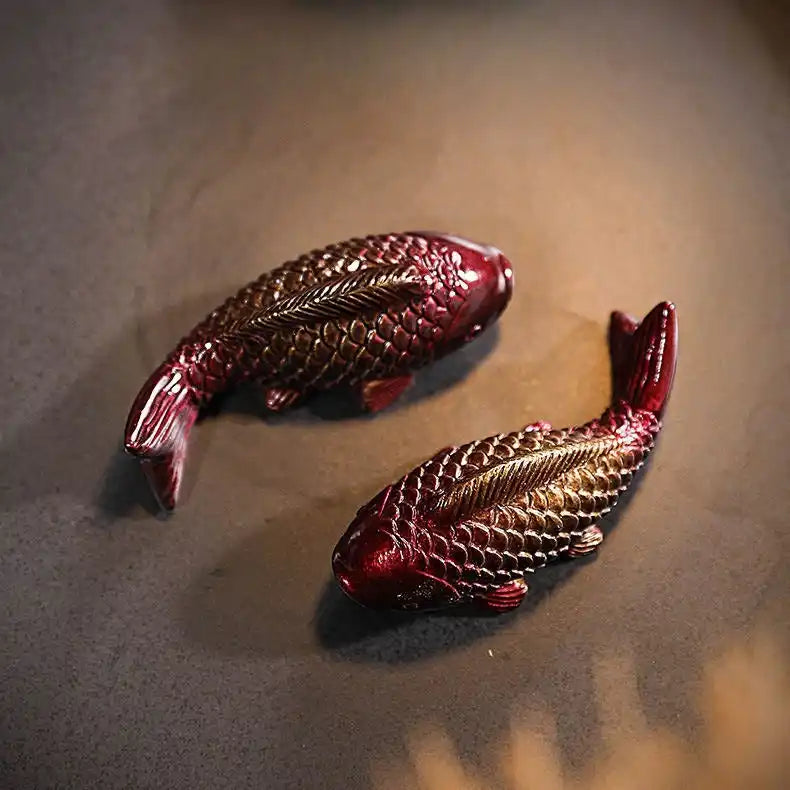
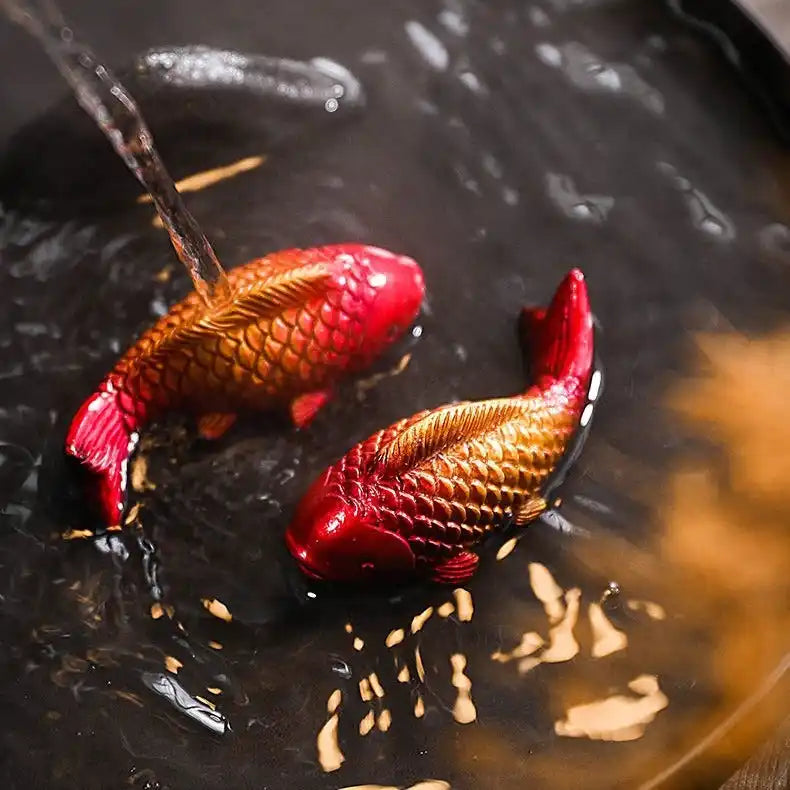
Timeless craftsmanship passed down through generations.
Our picks for you
Type: Tea Set
Joyful Piglet Tea Set
Type: Tea Set
Whispers of Clay Tea Set
Type: Tea Set
Majestic Harmony Tea Set
Type: Coffee Cup
Frosted Dawn Coffee Cup
Type: Coffee Cup
Whispering Earth Coffee Cup
Featured products tab
Explore Teaware
Yixing Purple Clay Teapots: The Science Behind the Clay
🏺 Yixing Purple Clay Teapots: The Science Behind the Clay Discover why these legendary teapots are considered the pinnacle of tea brewing vessels 🌍 The Geological Marvel of Yixing Yixing purple clay (紫砂, zisha) is not just any clay - it's a geological treasure found exclusively in the hills around Yixing City, Jiangsu Province, China. This unique clay has been forming for millions of years, creating a material with properties that modern science is still working to fully understand. 🔬 The Scientific Composition Yixing clay contains a unique blend of minerals: Kaolinite (40-60%): Provides plasticity and strength Quartz (10-20%): Adds durability and heat resistance Mica (15-25%): Creates the distinctive shimmer Iron oxides (2-8%): Responsible for the purple coloration Trace minerals: Contribute to unique properties What makes this clay extraordinary is its double-pore structure - a network of both open and closed pores that allows the teapot to "breathe" while maintaining structural integrity. 🎨 The Three Sacred Clays 🟣 Zi Ni (Purple Clay) Color: Deep purple to reddish-brown Best for: Dark oolongs, aged teas 🟡 Duan Ni (Yellow Clay) Color: Light yellow to beige Best for: Green teas, light oolongs 🔴 Zhu Ni (Red Clay) Color: Bright red to orange Best for: High-fired oolongs, black teas 🔥 The Transformation: From Clay to Teapot ⚡ The Firing Process The magic happens in the kiln. Yixing clay is fired at temperatures between 1100-1200°C (2012-2192°F), causing several critical transformations: 🧪 Chemical Changes During Firing: Vitrification: Clay particles partially melt and fuse Pore Formation: Creates the signature breathable structure Color Development: Iron oxides react to create final hues Strength Building: Molecular bonds strengthen the clay 🌿 Why Yixing Clay Enhances Tea 💨 The Breathing Effect Unlike glazed ceramics, Yixing clay's porous structure allows minimal air exchange. This "breathing" serves several purposes: Temperature Regulation: Maintains optimal brewing temperature Flavor Enhancement: Allows tea oils to penetrate the clay Aroma Concentration: Traps and releases tea fragrances Water Softening: Minerals in clay interact with water 🧬 The Seasoning Science Over time, tea oils and tannins penetrate the clay's pores, creating a "seasoned" teapot. This process: 🔬 How Seasoning Works: Absorption: Clay pores absorb tea compounds Oxidation: Compounds react with air in pores Layering: Multiple tea sessions build flavor layers Release: Seasoned clay enhances future brews 🎯 Choosing the Right Clay for Your Tea 🍃 Tea and Clay Pairing Science Different clays interact uniquely with various teas due to their mineral content and porosity: High-fired clays (Zhu Ni): Dense structure suits robust teas Medium-fired clays (Zi Ni): Balanced porosity for complex teas Lower-fired clays (Duan Ni): More porous, ideal for delicate teas 🧪 The pH Factor Yixing clay is naturally alkaline (pH 7.5-8.5), which can: Neutralize acidic teas Enhance sweetness perception Reduce astringency in strong teas Improve overall flavor balance 🔍 Identifying Authentic Yixing Clay 🕵️ Scientific Authentication Methods Authentic Yixing clay has distinctive characteristics: 🔬 Authenticity Indicators: Sound Test: Authentic clay produces a clear, metallic ring Water Absorption: Should absorb water slowly but noticeably Color Consistency: Natural variations, not uniform artificial coloring Weight: Denser than regular clay due to mineral content Texture: Slightly rough, not perfectly smooth 🧼 The Science of Yixing Care ⚗️ Proper Maintenance Chemistry Caring for Yixing teapots requires understanding the clay's chemical properties: No Soap: Detergents can clog pores and remove beneficial oils Hot Water Only: Heat opens pores for proper cleaning Air Drying: Prevents bacterial growth in pores Single Tea Type: Prevents flavor contamination 🌡️ Temperature and Yixing Clay 🔥 Thermal Properties Yixing clay's thermal characteristics make it ideal for tea brewing: 🌡️ Heat Management: Low Thermal Conductivity: Retains heat longer than metal Even Heat Distribution: Prevents hot spots Gradual Cooling: Allows controlled extraction Thermal Shock Resistance: Handles temperature changes well 🔬 Modern Scientific Research Recent studies have revealed fascinating insights about Yixing clay: Mineral Release: Clay slowly releases beneficial minerals into tea Antioxidant Enhancement: May increase tea's antioxidant activity Flavor Compound Interaction: Specific minerals interact with tea compounds Microstructure Analysis: Advanced imaging reveals complex pore networks 🛒 Experience Authentic Yixing Craftsmanship Ready to experience the science of Yixing clay firsthand? Authentic teapots make a remarkable difference in your tea brewing experience. 🏺 Our Yixing Collection Explore our carefully authenticated Yixing Teapot Collection featuring traditional shapes and verified clay sources. 🍃 Perfect Tea Pairings Enhance your Yixing experience with our Premium Oolong Teas and Aged Pu-erh Collection. 🌟 Conclusion: Where Science Meets Art Yixing purple clay teapots represent a perfect marriage of geological science and human artistry. The unique properties of this ancient clay - its mineral composition, porous structure, and thermal characteristics - create brewing vessels that genuinely enhance the tea experience. Understanding the science behind Yixing clay deepens appreciation for these remarkable teapots and helps you make informed choices about care, use, and selection. Every cup brewed in authentic Yixing clay connects you to millions of years of geological formation and centuries of refined craftsmanship.
Learn moreTea Pet Guide: Your Ceramic Companion's Meaning and Care
🐉 Tea Pet Guide: Your Ceramic Companion's Meaning and Care Discover the magical world of tea pets and their role in Chinese tea culture 🎭 What Are Tea Pets? Tea pets (茶宠) are small ceramic figurines that serve as companions during Chinese tea ceremonies. These charming creatures are more than decorative objects - they're believed to bring good fortune, absorb negative energy, and add joy to your tea practice. 🏛️ Ancient Origins Tea pets originated during the Yuan Dynasty (1271-1368) and flourished in the Ming and Qing periods. Originally crafted from leftover Yixing clay, these figurines were "fed" tea during ceremonies, gradually developing a beautiful patina that reflected their owner's tea journey. Unlike static decorations, tea pets are interactive companions that change and evolve with use. The more tea you pour over them, the more beautiful and "alive" they become. 🌟 The Spiritual Meaning of Tea Pets 🧘 Feng Shui and Energy In Chinese philosophy, tea pets serve multiple spiritual purposes: Energy Absorption: They absorb negative energy from the tea space Good Fortune: Different animals bring specific types of luck Companionship: They provide comfort during solitary tea sessions Mindfulness: Caring for them enhances meditation practice 🐾 Types of Tea Pets and Their Meanings 🐉 Dragons Meaning: Power, wisdom, protection Best for: Career success, leadership 🦊 Foxes Meaning: Intelligence, love, transformation Best for: Relationships, creativity 🐸 Frogs Meaning: Wealth, abundance, prosperity Best for: Financial success 🐘 Elephants Meaning: Wisdom, strength, good luck Best for: Stability, family harmony 🐢 Turtles Meaning: Longevity, patience, endurance Best for: Health, long life 🐱 Cats Meaning: Independence, mystery, protection Best for: Personal growth 🎨 Special Features: Color-Changing Tea Pets Modern tea pets often feature thermochromic technology that creates magical color transformations when hot tea is poured over them. This innovation combines ancient tradition with contemporary wonder. 🌈 How Color-Changing Works These special tea pets contain temperature-sensitive pigments that react to heat. When you pour hot tea over them, they reveal hidden colors, patterns, or designs. As they cool, they gradually return to their original appearance, creating an endless cycle of transformation. 🍵 How to Use Tea Pets in Your Ceremony 🎯 Placement and Positioning Tea tray corner: Traditional placement for good energy flow Facing you: Creates connection and interaction Near teapot: Allows easy "feeding" during ceremony Multiple pets: Create a small community on your tea tray 🥄 "Feeding" Your Tea Pet The ritual of "feeding" involves pouring the first brew or tea rinse over your pet. This practice: Builds a bond between you and your companion Gradually develops the pet's patina and character Adds mindfulness to your tea ceremony Honors the tradition of tea pet care 🧼 Caring for Your Tea Pet 🌿 Daily Care Routine Gentle rinse: Use warm water after each tea session Soft brush: Clean with tea brush or soft toothbrush Natural drying: Air dry completely before storing No soap: Avoid detergents that can damage the clay 🛡️ Long-term Maintenance Regular feeding: Pour tea over them consistently Gentle handling: They're delicate ceramic pieces Proper storage: Keep in safe, dry place Seasonal cleaning: Deep clean monthly with tea water 🎪 Choosing Your Perfect Tea Pet 🎯 Consider Your Intentions Career goals: Choose dragons or lions for power Love and relationships: Foxes or mandarin ducks Wealth and prosperity: Frogs or golden toads Health and longevity: Turtles or cranes Wisdom and learning: Elephants or owls 🎨 Aesthetic Preferences Traditional style: Classic animals in natural clay colors Modern design: Contemporary shapes and bright colors Color-changing: Interactive pets with thermochromic features Size considerations: Match your tea tray and ceremony style 🌸 Tea Pet Etiquette and Traditions 🙏 Respectful Practices Daily greeting: Acknowledge your pet at ceremony start Sharing tea: Always include them in your tea ritual Gentle touch: Pet them occasionally for connection Gratitude: Thank them for their companionship 🎁 Gift-Giving Traditions Tea pets make meaningful gifts that carry deep cultural significance. When giving a tea pet: Choose based on the recipient's needs or wishes Include care instructions and meaning explanation Consider it a blessing for their tea journey Respect the spiritual aspect of the gift 🔮 The Magic of Tea Pet Transformation Over time, your tea pet will develop a unique patina from the teas you share. This transformation is considered a reflection of your tea journey - the more mindfully you practice, the more beautiful your companion becomes. ✨ Signs of a Well-Loved Tea Pet Rich patina: Deep, lustrous surface from tea oils Smooth texture: Polished feel from gentle handling Color depth: Enhanced natural clay colors Personal connection: Strong bond with owner 🛒 Find Your Perfect Tea Pet Companion Ready to welcome a tea pet into your ceremony? Each one brings unique energy and meaning to your tea practice. 🎭 Explore by Purpose Discover tea pets designed for specific intentions: Meditation, Health, Love, Wealth, and Career success. 🌈 Special Collection Experience the magic of our Color-Changing Tea Pets that transform before your eyes during each ceremony. 🌟 Conclusion: Your Journey with Tea Pets Tea pets are more than ceramic figurines - they're spiritual companions that enrich your tea ceremony with meaning, joy, and positive energy. Whether you choose a traditional dragon for wisdom or a modern color-changing fox for love, your tea pet will become an integral part of your tea journey. Start with one that speaks to your heart, care for it with intention, and watch as both you and your ceramic companion grow together through countless shared tea moments.
Learn moreTea Trays: The Essential Foundation of Chinese Tea Ceremony
🍃 Tea Trays: The Essential Foundation of Chinese Tea Ceremony Discover the art and function of traditional tea trays in authentic tea culture 🎋 What is a Tea Tray? A tea tray (茶盘) is far more than a simple platform - it's the foundation of Chinese tea ceremony. This essential piece serves both practical and aesthetic purposes, containing spills while creating an organized, beautiful space for tea preparation. 🏛️ Historical Significance Tea trays have been integral to Chinese tea culture since the Tang Dynasty (618-907 AD). Originally simple wooden platforms, they evolved into sophisticated pieces that reflect the ceremony's emphasis on harmony, respect, and mindfulness. 🌿 Types and Materials 🎋 Bamboo Benefits: Lightweight, natural antimicrobial properties Best for: Daily use, beginners 🌳 Hardwood Benefits: Durable, beautiful grain patterns Best for: Formal ceremonies, collectors 🏺 Ceramic Benefits: Easy to clean, heat resistant Best for: Special occasions, display 🪨 Stone Benefits: Extremely durable, unique textures Best for: Permanent setups, luxury ⚙️ Essential Features 🌊 Drainage System Quality tea trays feature built-in drainage to handle water from rinsing teaware and overflow during brewing. This keeps the ceremony clean and prevents water damage to furniture. 📏 Size Considerations Tea trays come in various sizes: Small (20-30cm): Personal use, single servings Medium (30-45cm): 2-4 people, most popular size Large (45cm+): Group ceremonies, formal settings 🎨 Design Elements 🐉 Traditional Motifs Many tea trays feature carved designs with cultural significance: Dragons: Power and good fortune Lotus flowers: Purity and enlightenment Bamboo patterns: Flexibility and resilience Mountain landscapes: Connection to nature 🎯 Functional Design Beyond aesthetics, tea trays incorporate practical elements like raised edges, non-slip surfaces, and strategically placed drainage holes for optimal functionality. 💡 Choosing Your Tea Tray: Consider your space: Measure your tea area first Match your style: Traditional vs. modern aesthetics Think about maintenance: Some materials require more care Budget wisely: Quality pieces last decades 🧘 The Tea Tray in Ceremony In Gongfu tea ceremony, the tea tray serves as a sacred space where transformation occurs. It contains not just water and tea, but the entire ritual experience, creating boundaries that separate the ceremony from everyday life. 🌸 Symbolic Meaning The tea tray represents the earth element in Chinese philosophy, providing stability and grounding for the ceremony. Its circular or rectangular shape often symbolizes completeness and harmony. 🔧 Care and Maintenance 🧽 Daily Care Rinse immediately: Clean after each use Dry thoroughly: Prevent mold and warping Avoid harsh chemicals: Use mild soap only Oil wooden trays: Monthly conditioning for wood 🛡️ Long-term Preservation Store properly: Avoid extreme temperatures Handle gently: Prevent cracks and chips Regular inspection: Check for wear and damage 🌟 Modern Innovations Contemporary tea tray designs blend traditional aesthetics with modern functionality: Modular systems: Expandable and customizable Smart drainage: Improved water management Hybrid materials: Combining wood with modern elements Compact designs: Perfect for small spaces 🎭 Cultural Etiquette Proper tea tray etiquette enhances the ceremony experience: Placement: Position centrally for easy access Organization: Arrange tools systematically Cleanliness: Maintain spotless appearance Respect: Treat as sacred ceremonial space 🛒 Find Your Perfect Tea Tray Ready to enhance your tea ceremony with an authentic tea tray? Quality matters when choosing this essential piece of teaware. 🎋 Our Tea Tray Collection Explore our carefully curated Tea Tray Collection featuring traditional bamboo, premium hardwood, and artistic ceramic options. 🍃 Complete Your Setup Pair your tea tray with our Traditional Teaware and Complete Tea Sets for the ultimate ceremony experience. 🌟 Conclusion A tea tray is more than functional equipment - it's the foundation that transforms simple tea drinking into meaningful ceremony. Whether you choose traditional bamboo or elegant hardwood, the right tea tray creates the perfect space for mindful tea practice. Invest in quality, respect the tradition, and let your tea tray become the centerpiece of countless peaceful tea moments.
Learn more
Learn Tea Culture
Understanding Chinese Tea Regions: A Journey Through Famous Mountains
🏔️ Understanding Chinese Tea Regions: A Journey Through Famous Mountains Explore the legendary tea mountains where geography, climate, and culture create the world's finest teas 🌍 The Concept of Terroir in Chinese Tea Terroir - the unique combination of soil, climate, altitude, and human tradition - is nowhere more evident than in China's legendary tea regions. Each mountain range creates distinct microclimates that produce teas with unmistakable characteristics, making Chinese tea regions some of the most diverse and prized in the world. 🌿 What Makes Chinese Tea Regions Special: Altitude: High elevation creates cooler temperatures and slower leaf growth Mist and Clouds: Natural humidity protects leaves and enhances flavor Soil Composition: Mineral-rich soils from ancient geological formations Traditional Knowledge: Centuries of cultivation and processing expertise 🏔️ The Four Great Tea Mountains 🌋 Wuyi Mountains (武夷山) Province: Fujian Famous for: Rock Oolongs (Yan Cha) Signature Tea: Da Hong Pao Terroir: Danxia landform creates unique "rock bone flower fragrance" 🌸 Yellow Mountains (黄山) Province: Anhui Famous for: Green Teas Signature Tea: Huangshan Maofeng Terroir: Granite peaks and pine forests create delicate, sweet teas 🌿 West Lake (西湖) Province: Zhejiang Famous for: Premium Green Tea Signature Tea: Longjing (Dragon Well) Terroir: Lake microclimate and limestone soil create iconic flat-leaf tea 🌳 Mengding Mountain (蒙顶山) Province: Sichuan Famous for: Historical Tea Origin Signature Tea: Mengding Ganlu Terroir: Birthplace of tea cultivation with 2,000+ year history ☁️ Yunnan: The Ancient Tea Kingdom Yunnan Province stands apart as the birthplace of tea trees, home to ancient tea forests and the legendary Pu-erh tea. This southwestern region's unique geography creates some of the world's most complex and age-worthy teas. 🌦️ Yunnan's Unique Climate: Subtropical Highland: Warm days, cool nights Monsoon Influence: Distinct wet and dry seasons Ancient Forests: Wild tea trees over 1,000 years old Biodiversity: Rich ecosystem supports complex tea flavors 🗻 Famous Yunnan Tea Mountains: Menghai (勐海): Heart of Pu-erh production Yiwu (易武): Ancient tea trading center Bulang Mountain (布朗山): Home to oldest tea trees Nannuo Mountain (南糯山): Famous for ancient tree tea 🌊 Fujian: The Oolong Paradise Fujian Province, with its mountainous terrain and maritime climate, is the birthplace of oolong tea and home to some of China's most prized tea varieties. 🏔️ Wuyi Mountains: The Rock Tea Capital The Wuyi Mountains' unique Danxia landform creates the perfect environment for Yan Cha (rock tea). The mineral-rich soil and rocky terrain impart the distinctive "rock bone flower fragrance" that makes these teas legendary. 🪨 Wuyi Rock Tea Characteristics: Mineral Complexity: Rocky soil creates unique mineral notes Roasting Tradition: Charcoal roasting adds depth and longevity Biodiversity: Protected UNESCO site maintains natural ecosystem Microclimate Variation: Each cliff face creates different tea personalities 🌺 Anxi County: Iron Goddess Territory Anxi County produces the world-famous Tie Guan Yin (Iron Goddess of Mercy), an oolong tea renowned for its floral fragrance and complex flavor evolution. 🍃 Zhejiang: The Green Tea Heartland Zhejiang Province, particularly the West Lake region around Hangzhou, represents the pinnacle of Chinese green tea production. 🏞️ West Lake Longjing: A UNESCO Heritage The West Lake Longjing tea region benefits from a unique microclimate created by the lake's moderating influence, surrounding hills, and specific soil composition. 🌊 West Lake Microclimate Benefits: Temperature Moderation: Lake prevents extreme temperature swings Humidity Control: Natural moisture regulation Soil Quality: Alluvial deposits create nutrient-rich growing medium Cultural Heritage: 1,000+ years of refined cultivation techniques 🌸 Anhui: The Mountain Tea Province Anhui Province's mountainous terrain and temperate climate create ideal conditions for both green and black teas. ⛰️ Huangshan (Yellow Mountains) The Yellow Mountains' granite peaks, pine forests, and frequent cloud cover create the perfect environment for Huangshan Maofeng, one of China's top ten famous teas. 🌿 Qimen County: Black Tea Excellence Qimen County produces the world-renowned Keemun black tea, prized for its wine-like aroma and smooth, malty flavor. 🌡️ Climate and Seasonal Influence Chinese tea regions experience distinct seasonal patterns that dramatically influence tea quality and character: 🗓️ Seasonal Tea Characteristics: Spring (March-May): Most prized harvest, tender leaves, concentrated flavors Summer (June-August): Faster growth, stronger flavors, less delicate Autumn (September-November): Balanced flavors, good for oolongs Winter (December-February): Dormant period, no harvest in most regions 🏛️ Cultural and Historical Significance Each tea region carries deep cultural significance, with local traditions, festivals, and processing methods passed down through generations. 📜 Tea Culture Traditions: Harvest Festivals: Celebrating first spring pickings Processing Rituals: Traditional methods preserved as cultural heritage Tea Master Lineages: Knowledge passed through family generations Regional Ceremonies: Unique tea preparation and serving customs 🌿 Modern Challenges and Conservation Today's tea regions face challenges from climate change, urbanization, and changing agricultural practices. Conservation efforts focus on: Protecting Ancient Trees: Preserving genetic diversity Sustainable Farming: Organic and ecological practices Cultural Preservation: Maintaining traditional knowledge Quality Standards: Geographic origin protection 🎯 Understanding Tea Region Labels When purchasing Chinese tea, understanding regional designations helps ensure authenticity and quality: 🏷️ Key Label Information: Specific Mountain/Village: More precise than general province Harvest Season: Spring teas command premium prices Altitude: Higher elevation often indicates better quality Processing Method: Traditional vs. modern techniques 🛒 Explore Authentic Regional Teas Ready to taste the unique terroir of China's famous tea regions? Our collection features authentic teas from these legendary mountains. 🏔️ Regional Tea Collection Discover our Premium Chinese Tea Collection featuring authentic teas from famous mountains and regions. 🍃 Specific Regional Favorites Try our Wuyi Rock Oolongs, West Lake Longjing, and authentic Yunnan Pu-erh teas. 🌟 Conclusion: A Taste of Geography Understanding Chinese tea regions transforms tea drinking from simple consumption to cultural exploration. Each cup carries the essence of its mountain home - the mist, soil, altitude, and centuries of human dedication that create these liquid masterpieces. Whether you're sipping a delicate Longjing from West Lake's shores or a robust rock oolong from Wuyi's cliffs, you're experiencing the unique terroir that makes Chinese tea regions the most diverse and fascinating in the world. Next time you brew Chinese tea, remember: you're not just making a beverage - you're connecting with ancient mountains, traditional wisdom, and the natural forces that create tea's infinite variety.
Learn moreChinese Tea Storage Guide: Preserving Your Premium Tea
🍃 Chinese Tea Storage Guide: Preserving Your Premium Tea Master the art of tea preservation to maintain flavor, aroma, and quality for years 🌿 Why Proper Tea Storage Matters Premium Chinese tea is a living product that continues to evolve after processing. Proper storage isn't just about preventing spoilage - it's about preserving the complex compounds that create tea's unique flavors, aromas, and health benefits. 🔬 The Science of Tea Degradation Tea deterioration occurs through several processes: Oxidation: Exposure to air breaks down flavor compounds Moisture absorption: Humidity causes mold and bacterial growth Light damage: UV rays destroy delicate tea polyphenols Temperature fluctuation: Heat accelerates chemical breakdown Contamination: Foreign odors penetrate tea leaves ☠️ The Five Enemies of Tea ⚠️ What Destroys Your Tea: 🌞 Light: Breaks down chlorophyll and essential oils 💨 Air: Causes oxidation and flavor loss 💧 Moisture: Leads to mold, mildew, and spoilage 🔥 Heat: Accelerates aging and degrades compounds 👃 Odors: Tea absorbs surrounding smells easily 🏺 Storage Methods by Tea Type 🌱 Green Tea Method: Refrigerated, airtight Duration: 1-2 years Key: Prevent oxidation 🖤 Black Tea Method: Room temperature, sealed Duration: 2-3 years Key: Moisture control 🌸 Oolong Tea Method: Cool, dry, airtight Duration: 2-3 years Key: Preserve complexity 🤍 White Tea Method: Natural aging environment Duration: Improves with age Key: Controlled humidity 🍂 Pu-erh Tea Method: Breathable, stable Duration: Decades Key: Allow natural aging 🌼 Jasmine Tea Method: Airtight, cool Duration: 1-2 years Key: Preserve fragrance 📦 Container Selection Guide 🏺 Traditional Options Ceramic Canisters: Excellent for daily-use teas, non-reactive Bamboo Containers: Natural, breathable, traditional aesthetic Yixing Clay Jars: Ideal for pu-erh, allows controlled aging Paper Wrapping: Traditional for pu-erh cakes, allows breathing 🔒 Modern Solutions Vacuum-Sealed Bags: Best for long-term green tea storage Tin Canisters: Light-proof, airtight, portable Glass Jars: Good visibility, but store in dark places Mylar Bags: Professional-grade barrier protection 🌡️ Environmental Control 🎯 Optimal Storage Conditions 📊 Ideal Parameters: Temperature: 60-70°F (15-21°C) Humidity: 50-60% relative humidity Light: Complete darkness or minimal indirect light Air circulation: Minimal for most teas, controlled for pu-erh Stability: Consistent conditions, avoid fluctuations 🏠 Location Selection Best Storage Locations: Cool, dry pantry or cupboard Dedicated tea storage room Climate-controlled basement Interior closet away from kitchen heat Avoid These Areas: Near stoves, ovens, or heating vents Bathrooms or laundry rooms (high humidity) Garages or attics (temperature extremes) Direct sunlight or bright artificial light ❄️ Refrigeration: When and How 🧊 Refrigeration Guidelines ✅ Refrigerate These Teas: Green teas: Especially delicate varieties like Gyokuro High-grade white teas: Silver needle, white peony Fresh oolongs: Lightly oxidized, floral varieties ❌ Never Refrigerate: Pu-erh teas: Disrupts natural aging process Dark oolongs: Can develop off-flavors Scented teas: May lose fragrance oils 🔧 Proper Refrigeration Technique Double-seal: Use airtight container inside sealed bag Prevent condensation: Let tea reach room temperature before opening Separate storage: Keep away from strong-smelling foods Monitor humidity: Use desiccant packets if needed ⏰ Aging vs. Preservation 🍷 Teas That Improve with Age Pu-erh Tea Storage: Maintain 60-70% humidity for proper aging Ensure air circulation without contamination Store away from strong odors Monitor for mold growth regularly White Tea Aging: Store in breathable containers Maintain stable, cool environment Allow natural oxidation over years Protect from light and extreme temperatures ⚡ Teas to Consume Fresh Green teas: Best within 1-2 years Jasmine teas: Fragrance fades over time Light oolongs: Delicate flavors diminish 🔍 Monitoring Tea Quality 👀 Visual Inspection 🚨 Warning Signs: Color changes: Fading or unusual discoloration Mold growth: White, green, or black spots Pest activity: Small holes or insect presence Clumping: Leaves sticking together from moisture 👃 Aroma Assessment Fresh tea: Should smell vibrant and characteristic Stale tea: Flat, dusty, or absent aroma Contaminated tea: Foreign or unpleasant odors Moldy tea: Musty, damp, or sour smells 📅 Rotation and Inventory 🔄 First In, First Out (FIFO) Label containers with purchase/opening dates Use older teas before newer ones Keep inventory list for large collections Regular quality checks every 3-6 months 🌍 Climate Considerations 🏜️ Dry Climates Add humidity control for pu-erh aging Monitor for over-drying of leaves Use sealed containers for most teas 🌊 Humid Climates Use desiccant packets liberally Increase air circulation Monitor closely for mold growth Consider dehumidifiers for storage areas 🚫 Common Storage Mistakes ❌ Avoid These Errors: Mixing tea types: Flavors can cross-contaminate Using clear containers: Light exposure damages tea Storing near spices: Strong aromas penetrate tea Ignoring humidity: Both too much and too little cause problems Frequent opening: Repeated air exposure degrades quality Wrong container size: Too much air space accelerates oxidation 🛒 Enhance Your Tea Storage Proper storage containers and accessories can significantly extend your tea's lifespan and maintain its quality. 📦 Storage Solutions Explore our Tea Storage Collection featuring traditional ceramic canisters, bamboo containers, and modern airtight solutions. 🍃 Premium Teas Worth Preserving Invest in quality storage for our Premium Tea Collection and 2025 Spring Tea selections. 🌟 Conclusion: Protecting Your Investment Proper tea storage is an investment in your tea experience. By understanding the science behind tea degradation and implementing appropriate storage methods, you can preserve the complex flavors, aromas, and health benefits that make premium Chinese tea so special. Remember: great tea deserves great care. The effort you put into proper storage will be rewarded with consistently excellent cups of tea, whether you're enjoying them tomorrow or years from now.
Learn moreGreen, Black, or White Tea: Which is Best for Summer?
🌞 Green, Black, or White Tea: Which is Best for Summer? Discover the perfect tea to beat the heat and refresh your summer days 🤔 The Summer Tea Dilemma When summer heat hits, many people reach for ice-cold drinks. But here's something interesting: hot tea can actually cool you down more effectively than cold beverages. This might sound counterintuitive, but there's ancient wisdom behind it. "I used to think drinking hot tea in summer was crazy. But after trying it a few times, I discovered something magical - that cooling sensation that comes from within, not the harsh shock of ice-cold drinks." The Chinese have known this for centuries. Even in classical literature, summer tea drinking was considered an art. The key isn't just what you drink, but how and when you drink it. 🍃 The Three Contenders 🌱 Green Tea Best for: Hot afternoons Benefits: Cooling, refreshing, antioxidant-rich Caution: Don't drink on empty stomach 🖤 Black Tea Best for: AC-heavy environments Benefits: Warming, gentle on stomach Surprise: Great for summer digestive issues 🤍 White Tea Best for: Sensitive stomachs Benefits: Mild, cooling, least processed Perfect for: Those prone to summer breakouts 🌿 White Tea: The Hidden Summer Champion White tea often gets overlooked, but it might be your perfect summer companion. With minimal processing, it retains natural compounds that are gentle on your system. Why White Tea Wins Summer: Naturally cooling properties Low caffeine content Gentle on sensitive stomachs Helps with summer skin issues Sweet, refreshing taste I have a colleague who struggled with summer breakouts and digestive issues. After switching to white tea (specifically Bai Mu Dan) in the mornings, he noticed significant improvements within days. 🌱 Green Tea: The Classic Summer Choice Green tea is the obvious summer favorite - and for good reason. It's cooling, energizing, and perfect for hot days. However, there are some important considerations: "I learned the hard way that drinking strong green tea on an empty stomach in summer heat can upset your stomach. Now I always have it after meals and brew it lighter." Green Tea Summer Tips: Never drink on empty stomach Use cooler water (75-85°C) Brew lighter, steep shorter Perfect after meals 🖤 Black Tea: The Surprising Summer Ally Black tea might seem like a winter drink, but it has unique summer benefits. When you're dealing with too much air conditioning or cold foods, black tea can help balance your internal temperature. Think of black tea as your "internal sweater" - it's not about external heat, but about maintaining internal balance when your environment is artificially cooled. When Black Tea Shines in Summer: After too much air conditioning When experiencing digestive issues For those who get cold easily indoors Morning energy without the jitters 🌡️ The Temperature Truth Here's what many people don't realize: cold-brewed tea often tastes flat and can be harsh on your stomach, especially when you're already dehydrated from heat. Hot tea works by: Promoting natural sweating for cooling Improving circulation Providing sustained hydration Avoiding the shock of cold drinks 🎯 Your Personal Summer Tea Strategy The truth is, there's no one-size-fits-all answer. Your ideal summer tea depends on: Your constitution: Some people run hot, others cold Your environment: Office AC vs. outdoor heat Your stomach sensitivity: Some can handle strong tea, others need gentle options Your daily routine: Morning energy vs. afternoon calm "I've found that white tea is like morning dew, green tea like midday sunshine, and black tea like evening breeze. Summer has room for all three - it's about timing and listening to your body." 🌅 My Summer Tea Ritual Every afternoon when the sun is strongest, I brew a pot of white tea. Small sips, slowly savored, while the house is quiet except for the gentle hum of the fan. In those moments, summer doesn't feel so overwhelming anymore. 🛒 Ready to Find Your Perfect Summer Tea? Whether you're drawn to the gentle nature of white tea, the refreshing qualities of green tea, or the comforting warmth of black tea, the key is finding what works for your body and lifestyle. Explore our carefully curated selection: Premium Green Teas, Quality Black Teas, and Authentic White Teas. 🌟 The Bottom Line The best summer tea isn't about following rules - it's about understanding your body, respecting the tea's nature, and finding that perfect moment of refreshment that makes the heat bearable. Start with what appeals to you, pay attention to how your body responds, and remember: the goal isn't just to cool down, but to find balance and enjoyment in every sip.
Learn more